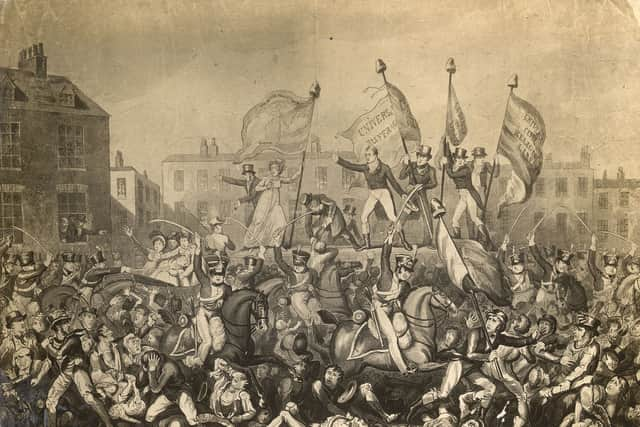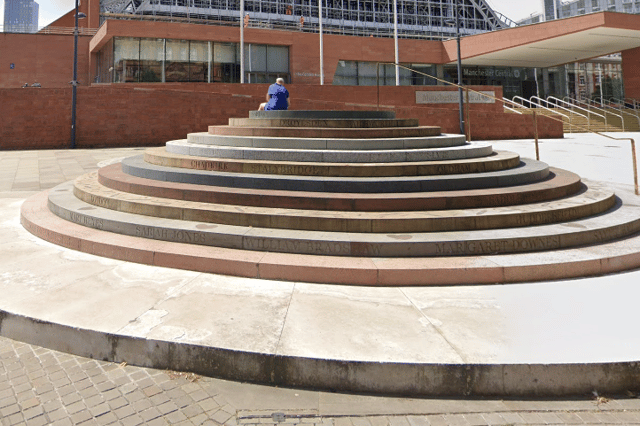The simple but powerful monument many Mancs walk past every day and its important place in city's history
and live on Freeview channel 276
Manchester is a city steeped in history, with its size and significance erupting with the birth of the Industrial Revolution in the 18th century. During this time, thousands of people moved from rural Lancashire into Manchester for work at the cotton mills and factories that sprang up during this time.
As more and more people worked in the city, there was a rise in the need for better working conditions and to stand up for a better life. On August 16 1819 60,000 people gathered for a pro-democracy and anti-poverty protest. It was a peaceful gathering, but the powers that be wouldn’t see it that way.
Advertisement
Hide AdAdvertisement
Hide AdThe day descended into chaos when local magistrates saw the people gathering in what is now St Peter’s Square. Speakers had taken to a stage to address the masses, but the peaceful nature of the event was transformed when the local Yeomanry - essentially a paramilitary force - were sent to disperse the crowd.


Hundreds of Hussars, cavalry soldiers, special constables and even an artillery unit waited in reserve. The Yeomanry charged at the protestors when they linked arms in an effort to prevent any arrests, and this is when the violence began. The men on horseback started attacking with swords and began to injure and even kill those in the square.
The chaos was viewed as the protestors attacking the Yeomanry, and as a result the Hussars were ordered in. By 2pm, the field was emptied but what remained were dead bodies and the banners of the protest. In total, 18 protestors were killed and as many as 700 injured by the Yeomanry and Hussars.
Speakers and those who organised the gathering were put on trial initially for treason, but this was dropped by the prosecution. On the other side of the issue, the magistrates and the Hussars who had been sent to the protest were given a congratulations from the Prince Regent - and then cleared of any wrongdoing of their handling of the protest.
Advertisement
Hide AdAdvertisement
Hide AdThe name ‘Peterloo’ was coined as a way of mocking the soldiers who, when attacking unarmed civilians, shouted out ‘Waterloo’, a battle that took place four years earlier in 1815. Soldiers from this battle were seen as heroes for defeating Napoleon Bonaparte’s French Forces.
The Peterloo Memorial


In 2019, 200 years on from the Peterloo Massacre, a memorial to commemorate the day was unveiled. Lying next to Manchester Central conference centre and near to the site of the massacre, the project was commissioned by Manchester City Council.
Designed by artist Jeremy Deller and Caruso St John architects, the monument is purposefully colourful and features 11 steps made from various types of stones from across the UK. carved into the steps are the names of the protestors who were killed as well as the towns and villages surrounding Manchester where they came from.
According to the architects, the artist’s intention was to have the memorial become a place of meeting and protest. People are invited to walk and sit on the memorial, but it has been argued that the stepped design makes the memorial non inclusive to those with certain disabilities, talks to change the design have taken place in the past.
Comment Guidelines
National World encourages reader discussion on our stories. User feedback, insights and back-and-forth exchanges add a rich layer of context to reporting. Please review our Community Guidelines before commenting.
